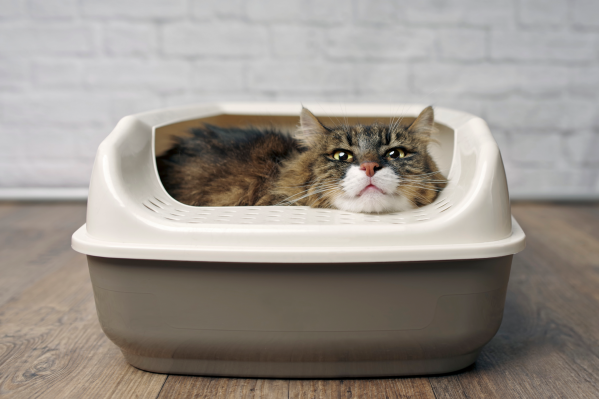Feline Lower Urinary Tract Disease (FLUTD) is a very common disease occurring in cats.
What is FLUTD? FLUTD is inflammation in the bladder and urinary tract. That inflammation can cause your cat to urinate more frequently, urinate outside of the litter box, or in a male cat, become obstructed to the point of where he can’t urinate—and that is a life threatening emergency.
As a pet parent, it's important to understand the causes, treatments, and possible ways to prevent your feline family member from experiencing this disease.
What causes FLUTD?
There are many possible causes of FLUTD, however, the two most common are 1) water intake, and 2) the type of food that your cat is eating.
Water intake in a cat is a very important component of FLUTD, as chronic dehydration increases the concentration of the urine and can cause inflammation. A typical 10-pound cat should drink about one cup of water a day (try this water intake calculator to help determine the appropriate amount for your cat).
The type of food you're feeding your cat is also a factor to consider when determining the cause of FLUTD. Finding high quality cat food is important—although any type of food can cause FLUTD, so there is not a diet that will fully prevent it. It is, however, best to avoid feeding your cat the cheapest food you can find. Canned food should be fed to cats at least weekly to increase their water intake.
How is FLUTD treated?
Once your veterinarian determines that your cat has FLUTD, the easiest and least expensive treatment is a diet change to a prescription diet, such as Royal Canin Urinary SO, VetLife Urinary, Hills c/d, or Purina Urinary Veterinary Diet. There are over-the-counter urinary food options, however, most of these are not sufficient, especially if you have a male cat.
If there is bacteria present, some cats may need an antibiotic.
If your cat refuses to eat the prescribed diet—because sometimes they are picky—a variety of different treatment options can be combined. Examples include: stress reducing medications like Composure Pro or Xanax, herbal medications to attract the cat to the litter box, or joint supplements like Cosequin. Cosequin works because the lining of the bladder is similar to the lining of joints.
As soon as you notice signs of FLUTD, it's important to reach out to a veterinarian. The longer your cat goes without urinating, the more dire it becomes. Obstructed male cats can die from kidney failure, high potassium, or heart failure.
How to prevent FLUTD
The first thing a pet parent can do is ensure that your cat is drinking water. If your cat only drinks water from the sink, get a water fountain for them. Water fountains are a source of cool, moving water for your cat. They can be found at any pet store or ordered through an online store.
Secondly, make sure you're feeding them high quality food and supplementing with canned food. Examples of high quality cat foods are Fromm, Royal Canin, Purina One, Purina Pro Plan, Iams, Farmina, and Zignature.
Lastly, the hardest cause and prevention to figure out is stress. Cats can be stressed for a variety of reasons and chronic stress can cause FLUTD. Interaction, climbing, toys, and protected access to outdoors are ways to decrease stress.
Have a question about FLUTD? The professionals at Pawp are here to help. We're available 24/7 and no appointment is required.
Additional Resources:

Reviewed and fact-checked by
Mika, RVT at Pawp
